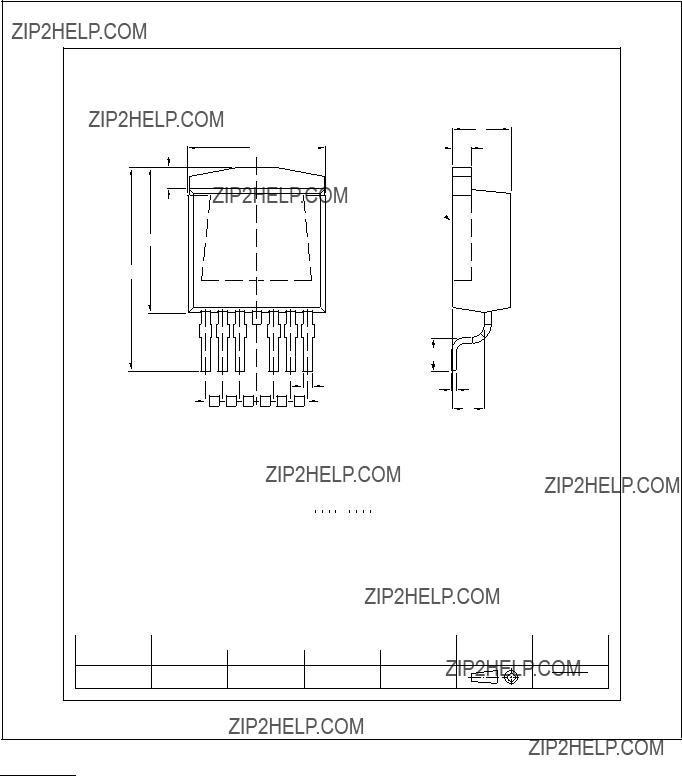QUICK REFERENCE DATA
DESCRIPTION
Vertical power TrenchMOS Low on-state resistance CMOS logic compatible Very low quiescent current Overtemperature protection Load current limiting Overload and
short circuit protection Self resetting overcurrent protection
Overvoltage and undervoltage shutdown with hysteresis Off-state open circuit
load detection
Diagnostic status indication Voltage clamping for turn off of inductive loads
ESD protection on all pins Reverse battery, overvoltage and transient protection
Fig.1. Elements of the TOPFET dual HSS with internal ground resistor.
CONVENTION
Positive currents flow into pins, except for load and ground pins.
LIMITING VALUES
Limiting values in accordance with the Absolute Maximum System (IEC 134)
ESD LIMITING VALUE
1 For normal continuous operation. A higher Tj is allowed as an overload condition but at the threshold Tj(TO) the over temperature trip operates to protect the switch.
2 Reverse battery voltage is allowed only with external resistors to ensure that the input and status currents do not exceed the limiting values.
The internal ground resistor limits the reverse battery ground current. The connected loads must limit the reverse load currents. Power is dissipated and the Tj rating must be observed.
3 To limit currents during reverse battery and transient overvoltages (positive or negative).
THERMAL CHARACTERISTIC
STATIC CHARACTERISTICS
Limits are at -40??C ??? Tmb ??? 150??C and typicals at Tmb = 25 ??C unless otherwise stated
1 Of the output Power MOS transistors.
2 For a high side switch, the load pin voltage goes negative with respect to ground during the turn-off of an inductive load. This negative voltage is clamped by the device.
3 On-state resistance is increased if the supply voltage is less than 7 V.
4 This is the continuous current drawn from the battery when both inputs are low and includes leakage currents to the loads.
5 Per channel but with both channels conducting. Defined as in ISO 10483-1.
6 Equivalent of the parallel connected resistors for both channels.
7 The supply and input voltage for the RON tests are continuous. The specified pulse duration tp refers only to the applied load current.
INPUT CHARACTERISTICS
OPEN CIRCUIT DETECTION CHARACTERISTICS
An open circuit load on either channel can be detected in the off-state. Refer to TRUTH TABLE. This feature requires external load pull-up to a positive supply voltage via a suitable resistor. Limits are at -40??C ??? Tmb ??? 150??C and typical is at Tmb = 25??C.
UNDERVOLTAGE & OVERVOLTAGE CHARACTERISTICS
Limits are at -40??C ??? Tmb ??? 150??C and typicals at Tmb = 25??C. Refer to TRUTH TABLE.
OVERLOAD PROTECTION CHARACTERISTICS
Independent protection per channel. Refer to TRUTH TABLE.
1 Undervoltage sensors causes each channel to switch off and reset.
2 Overvoltage sensors causes each output channel to switch off to protect its load.
3 Above this temperature measurement of these parameters is prevented because OT protection 4 Normal operation will be resumed when PD < PD(TO) and Tj < Tj(TO).
5 Trip time td sc varies with overload dissipation PD according to the exponential model formula td sc
6 After cooling below the reset temperature the channel will resume normal operation.
may occur prior to SC protection.
??? TDSC / LN[ PD / PD(TO) ].
STATUS CHARACTERISTICS
The status output is an open drain transistor, and requires an external pull-up circuit to indicate a logic high. Limits are at -40??C ??? Tmb ??? 150??C and typicals at Tmb = 25??C unless otherwise stated. Refer to TRUTH TABLE.
1 For example with the pull-up resistor short circuited while the status transistor is conducting. This condition should be avoided in order to prevent possible interference with normal operation of the device.
SWITCHING CHARACTERISTICS
Tmb = 25 ??C, VBG = 13 V, for resistive load RL = 13 ??? per channel.
CAPACITANCES
Tmb = 25 ??C; f = 1 MHz; VIG = 0 V
MECHANICAL DATA
A
D1
mounting base 
D
HD
Fig.4. SOT427 surface mounting package1, centre pin connected to mounting base.
1 Epoxy meets UL94 V0 at 1/8". Net mass: 1.5 g.
For soldering guidelines and SMD footprint design, please refer to Data Handbook SC18.

DEFINITIONS
DATA SHEET STATUS
Limiting values are given in accordance with the Absolute Maximum Rating System (IEC 134). Stress above one or more of the limiting values may cause permanent damage to the device. These are stress ratings only and operation of the device at these or at any other conditions above those given in the Characteristics sections of this specification is not implied. Exposure to limiting values for extended periods may affect device reliability.
Application information
Where application information is given, it is advisory and does not form part of the specification.
??? Philips Electronics N.V. 2001
All rights are reserved. Reproduction in whole or in part is prohibited without the prior written consent of the copyright owner.
The information presented in this document does not form part of any quotation or contract, it is believed to be accurate and reliable and may be changed without notice. No liability will be accepted by the publisher for any consequence of its use. Publication thereof does not convey nor imply any license under patent or other industrial or intellectual property rights.
LIFE SUPPORT APPLICATIONS
These products are not designed for use in life support appliances, devices or systems where malfunction of these products can be reasonably expected to result in personal injury. Philips customers using or selling these products for use in such applications do so at their own risk and agree to fully indemnify Philips for any damages resulting from such improper use or sale.
1 Please consult the most recently issued datasheet before initiating or completing a design.
2 The product status of the device(s) described in this datasheet may have changed since this datasheet was published. The latest information is available on the Internet at URL http://www.semiconductors.philips.com.







